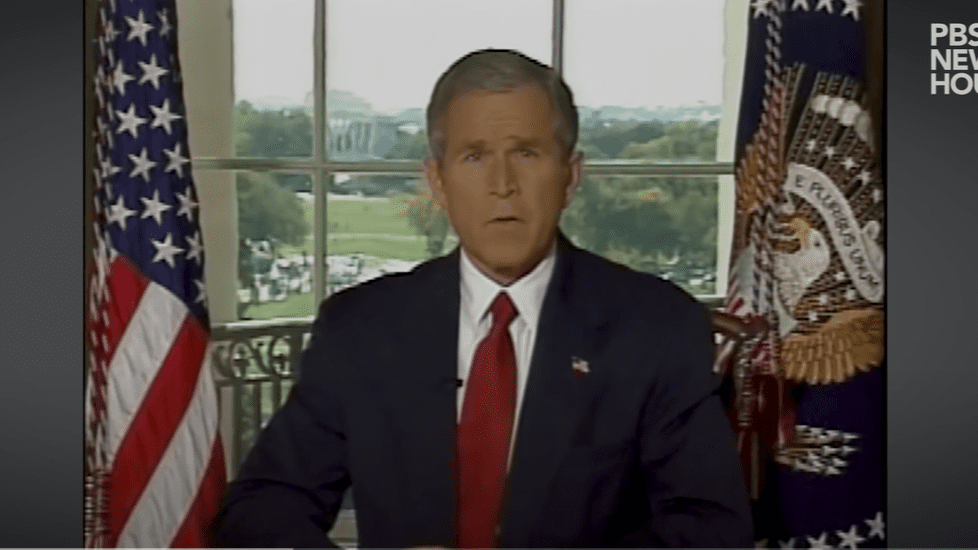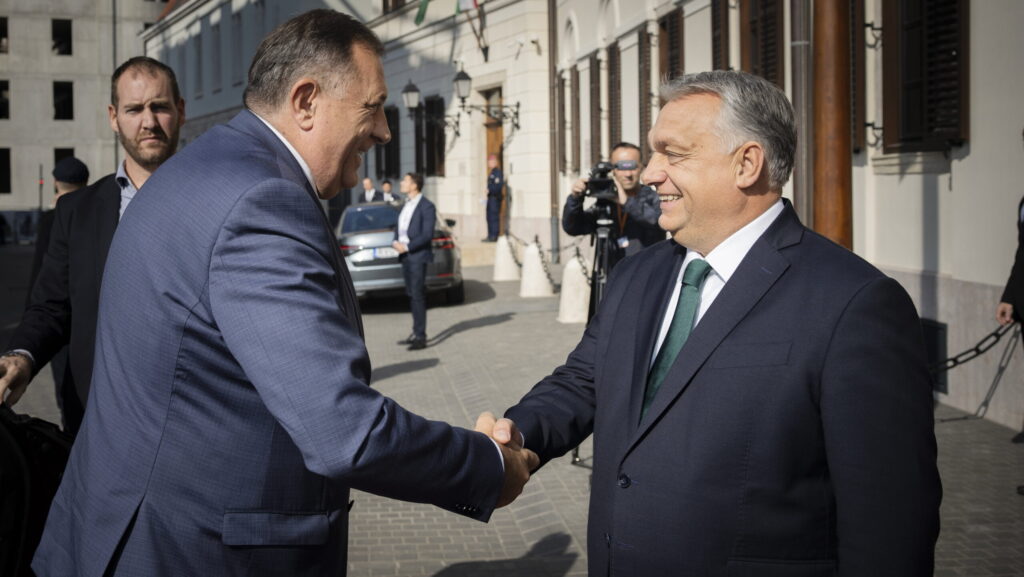On 7 October 2001, President George W. Bush announced that US troops commenced their attack on the Taliban-led Afghanistan. Today marks the 22nd anniversary of the Invasion of Afghanistan.
Similarly to Iraq, Afghanistan was also swiftly occupied by the US and its allies. However, supporters of the toppled Taliban regime started an insurgency almost immediately. After two decades of fighting, the Taliban recaptured Afghanistan in 2021.
Prelude: Historical Context
The dawn of the Taliban movement can be dated to around the end of the Soviet rule in Afghanistan. After the Soviets occupied the country in 1978, the United States started to arm and finance freedom fighters, called the Mujaheddin. It is important to note that ‘Mujaheddin’ and ‘Islamist’ are not interchangeable. It is true that the Mujaheddin movement was dominated by Islamists, however it also included secular nationalists and monarchists. Furthermore, views of the religious rebels varied from moderate to extremist. Members of the Taliban themselves were earlier divided between the moderate National Revolution Movement and the fundamentalist Hezb-i Islami Khalis. When Soviet troops gradually pulled out of the country, around the time when the disintegration of the Soviet Union began, a bloody civil war broke out. Moderates and fundamentalists scrambled for power. The hardliners were financed by Pakistan, which later also propped up the Taliban. The fight remained inconclusive, until a group of young and ever more radical fighters appeared.
The Rise of the Taliban
Initially, the Taliban were a group of young Muslim students and religious scholars, gathering around Mullah Muhammad Omar, making Kandahar, the hometown of Omar their centre. This group was discontented not only with the moderate, but even with the Islamist factions of the country. The Taliban envisaged a state built purely upon their own, fundamentalist interpretation of the Quran. For them,
all suffering in Afghanistan came from factional in-fights between groups which they believed were not pious enough.
Seeing no other option to move forward, the Taliban turned themselves into an armed rebel group and joined the factional in-fights of the Afghan Civil War around 1994. In the same year, their fighters captured Kandahar, their core area. Later, the Taliban grew into the strongest group, and eventually took over almost all the country. With massive Pakistani help, the Taliban captured Kabul in 1996, declaring Afghanistan an ‘Islamic emirate’.
While the new regime was harsh and restrictive, this alone would not have put it into conflict with the United States. After all, the Mujaheddin were propped up by Washington, and Pakistan, the alleged donor of the Taliban, was an ally of the US. However, there was a component which led to war: the Taliban sheltered Osama bin-Laden. Bin-Laden was a Salafist Islamist mujaheddin commander, previously seen favourably by Western powers. Their support for the fundamentalist warlord turned out to be self-destructive, as bin-Laden founded an Islamist extremist group, the al-Qaeda, which started to preparate terrorist attacks all around the world.
9/11 and the Invasion
The most notorious al- Qaeda attack came on 11 September 2001, when two airplanes, hijacked by terrorists, hit the World Trade Center in New York, one crashed in a Pennsylvania field and one onto the Pentagon.
It was these unprecedented attacks on US soil claiming thousands of lives that induced the US invasion of Afghanistan.
As Washington had to make a move, and the biggest donors of bin-Laden allegedly included Qatar, Saudi Arabia, and Pakistan, the most important regional allies of the United States, the Americans chose to target Afghanistan, which sheltered the terrorist group and had provided them with training. Furthermore, Bin-Laden himself was believed to be residing in Afghanistan. On 7 October, George Bush announced that US troops and their allies commenced their operation to oust the Taliban and the al-Qaeda from Afghanistan.
The invasion itself was swift, quick, and successful. By December, the allied troops secured most of Afghanistan, and Kabul also fell. In early December, the US air force started a massive bombing campaign against the Tora Bora cave complex, the main stronghold of the al-Qaeda, and the suspected hideout of bin-Laden himself. The operation, and thus the invasion, concluded on 17 December. Afghanistan came under allied control, and the al-Qaeda camps and bases were completely destroyed. However, bin-Laden and most of his terrorist group’s leadership, as well as many Taliban fighters, were able to flee to Pakistan, or elsewhere. In 2002, the Taliban formed a ‘government-in-exile’ in Quetta, Pakistan, and al-Qaeda resumed its global campaign of terror.
The Hungarian Mission: Allied Loyalty Demonstrated
After the invasion, some of the allies of the United States, especially the British, proposed not to engage in lengthy occupation. However, the US administration embarked on a nation-building project anyway. Bush wanted to create a democratic government for Afghanistan, which would respect human rights, including women’s rights. The US furthermore also wanted to improve the infrastructure, education, and health system of the country.
As a NATO and US ally, Hungary also took part in the execution of the project, sending troops to Afghanistan, albeit initially with strict caveats—Hungarian soldiers were not to engage in combat. The Hungarian Provincial Reconstruction Team (PRT) operated between 1 October 2006 and 31 March 2013 in the northern region of Afghanistan, in the relatively peaceful province of Baghlan. Provincial reconstruction teams were supposed to reorganize the life in the provinces with the help of a strong military presence as well as civil development and specialist teams. Later, the caveats were mostly removed, with so-called US–Hungarian OMLTs (Operational Mentoring and Liaison Teams) and Special Operations Teams also deployed, although in principle, those were to conduct training of local Afghan forces only.
Hungarian lives were also claimed in the demanding endeavour.
As Hungarian Conservative highlighted in a 2021 piece, in the summer of 2008, two Hungarian EOD specialists were killed. In 2010, a PRT convoy carrying soldiers, set to return to Hungary, from the PRT camp in Pol-e-Khumri to Mazar-e-Sharif, was ambushed by insurgents. An RPG killed a female soldiers on the spot, while a severely wounded male soldier died later. In 2011, two more soldiers, again a woman and a man, lost their lives in what was apparently a road accident as they were carrying out a logistical task traveling in an MRAP MaxxPro. The same year, a Hungarian medical officer suffered a heart attack in the PRT camp and his life could not be saved.
While on the whole, their efforts may be seen as ultimately futile, Hungarian soldiers gained invaluable experience and acquired special skills while in Afghanistan. When the troops of the last Afghanistan rotation of the Hungarian Defence Forces were welcomed home on 9 June in 2021, amidst limited media interest, the Chief of the HDF at the time, Romulusz Ruszin-Szendi said the expertise of all those who served in Afghanistan will be used in the training of the Hungarian military and will contribute ‘towards the protection of the Hungarian people and the guaranteeing of their security.’
US Mistakes
While the goals of the United States may not have been wrong or wholly unrealistic, US forces committed many mistakes, too, putting the grand project in peril. For instance, they harassed or blacklisted former Taliban fighters who had surrendered, and sometimes hit civilian targets. The Quetta Shura exploited this situation and planned a wholescale Taliban uprising. The rebellion gradually started to spread after 2005. The coalition forces were not prepared for it, and the Afghan government was even less prepared. Furthermore, the US and the Afghan government did not gain popular support, since they provided little help to people in remote areas, including being able to restore and keep order. By the end of 2005, the Taliban gained ground in Afghanistan, capturing some villages.
People in the taken areas started to think nostalgically about the era of the Islamic Emirate,
seeing it as stable and safe.
The second half of the 2000s saw increasingly large-scale battles between the coalition forces and the re-surging Taliban, which started to gain more territory, and perpetrated ambushes and terrorist attacks. By this time, their active membership reached over 10,000, their ranks being boosted by young Afghans, angered by unjust imprisonments and bombings of civilian targets by US troops.
In the 2010s, the Taliban troops became even more visible. For instance, in 2011, their fighters ambushed government buildings in Kandahar. The US government responded with a troops surge, but American casualties still increased. Seeing this approach as a failure, Barack Obama backtracked. The president decreased the number of US troops stationed in Afghanistan, and announced readiness to withdraw completely by 2014. Parallel to this plan, Americans trained Afghan troops to take over their combat role, similarly to the Vietnamization policy during the Vietnam War. The combat role of the US military officially ended in 2014, however, private military contractors and advisors remained in the country.
But this strategy was proven to be ultimately erroneous, and the Taliban gained the upper hand. Not only was the Afghan National Army less effective than the US troops, but the American pull-out also ended the air superiority of the anti-Taliban forces. Furthermore, the Taliban could also exploit the fact that the attention of the international public shifted from Afghanistan to places like Iraq, Syria, and Ukraine. By 2016, the group controlled 20 per cent of Afghanistan, and established Helmand Province as their stronghold. By the next year, Taliban cells were active in 70 per cent of the country.
After preparatory talks in 2018, official peace talks between the United States and the Taliban began in 2019, in Doha. On 29 February 2020, Zalmay Khalilzad on behalf of the United States, and Abdul Ghani Baradar, representing the Taliban, signed a peace deal. The fact that President Donald Trump was strongly in favour of decreasing US involvement in foreign wars was a major component of the process that led to the ratification of the deal d by the US. Washington pledged to withdraw from Afghanistan, and, in exchange, the Taliban promised not to let the Islamic State, or other terrorist groups, gain ground in the country, and furthermore, that they would start negotiations with the Afghan government. In accordance with the treaty, Washington started to slowly pull out its troops during 2020 and 2021. The approach to Afghanistan did not change during the Democratic presidency of Joe Biden either.
US Defeat and Conclusion
Sensing that the positions of the Afghan government had been fatally weakened, the Taliban commenced their final offensive on 1 May 2021. Their troops advanced quickly, capturing ever more territories, and regional seats. On 15 August, Kabul fell.
This practically ended the 20-year-long Afghanistan War.
The Taliban immediately declared the return of the Islamic emirate. Ever since, the group has been gradually reinstituting its brutal regime over Afghanistan, stripping women of their rights, and cruelly quelling all dissent.
The Afghanistan War was undoubtedly a failure for the United States and its allies, as shown by the almost immediate return to power of the Taliban. The coalition forces made many mistakes from the beginning, including committing war crimes, failing to provide sufficient help to the locals, and therefore, generally failing to gain their favour. Furthermore, the nation-building project failed as well, as the US was unable to set up a working and democratic Afghan government or prevent corruption. With the Taliban now eyeing Pakistani territories, and are already clashing with Pakistani forces, it can also be said that the US defeat possibly unleashed yet unknown dangers on the world.
Related articles:








